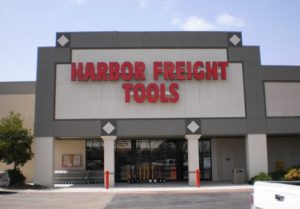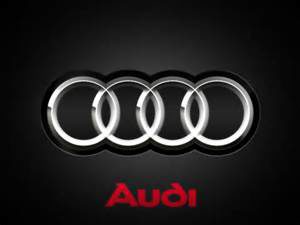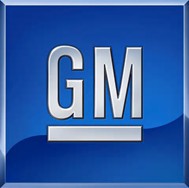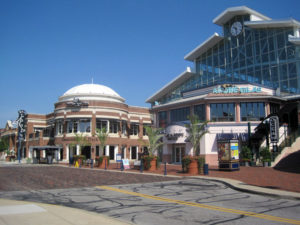BRANDING ISN’T ALWAYS FEEL GOOD MARKETING
This year marks the 12th year that I have been sharing views on branding, marketing, retailing, internet…and whatever else pops into my head as I scan the American marketplace for successful ideas on winning more loyal customers. During these years, I’ve talked about a lot of different types of businesses. Some are real success stories. Some have failed and have disappeared from view—never to be shopped or purchased again. Most of the time, I feature brand concepts that are communicated via outstanding creative executions that win over the hearts and minds of the customer as much as their wallets. To be sure it is the stories behind the brand strategy that make for memorable marketing and loyal customers.
This month, however, I’m featuring a retailer who has been a real success story, selling stuff that’s not very special, to people who just want what they need for a specific task at a really low price. There are no Addy Award winning campaigns here. Nor are the stores  going to win any praises for design or emulation of graphics and displays. Just tools. Let’s take a look at one of my favorite stores—Harbor Freight (see http://harborfreight.com).
going to win any praises for design or emulation of graphics and displays. Just tools. Let’s take a look at one of my favorite stores—Harbor Freight (see http://harborfreight.com).
No, Harbor Freight isn’t special because yours truly is a great handyman or do-it-yourselfer. I found the store quite by accident when they opened near a Sushi restaurant that I used to visit frequently. I was surprised at how many things they sold that I had no idea what they were used for. Nor was I aware how many sizes and shapes of drill bits existed in this world. The stores are clean, neatly organized, well signed. The merchandise—most of which is private label product from China—is well displayed and designed. The prices–even for one who rarely shops for tools—are obviously deep discounted compared to Sears or Home Depot.
Then, there’s the advertising. Oy! Nothing special here. Except consistency. Always price promotions. Always a 20% discount. Always a free with purchase item or two that just happens to be something that you could really use (like a flashlight, or battery checker, or screwdriver set. The discounts are real. The sale periods are limited and enforced. The offers are everywhere. In the newspaper every week. In ValPak mailers. In direct mail catalogues. Online. In Parade magazine or tucked into the freestanding inserts. The graphics are not exciting but are consistent with the store. Well organized. Strong pricing statements. Easily understood discounts.
![]() The products are well made and tested in their own quality test labs called The Workshop (https://youtu.be/_xDFCBPQJXs?t=2)The warranties are real and the 100% Satisfaction promise is enforced. Returns are easy. The people are knowledgeable enough that you can find just what you need.
The products are well made and tested in their own quality test labs called The Workshop (https://youtu.be/_xDFCBPQJXs?t=2)The warranties are real and the 100% Satisfaction promise is enforced. Returns are easy. The people are knowledgeable enough that you can find just what you need.
And it all works. Harbor Freight now has over 600 (with a new one opening every 3 days) stores doing over $2 Billion in annual sales. In the process, they have built a brand that may have surpassed in loyalty the Craftsmen brand that led to Sears’ success over the years. I believe the brand has thrived because of the consistency of the message, the stores, and the product every day. Check out their About Us video on their website (after the typical sale ad on the home page) to hear a great example of a brand strategy and how they live up to it every day.

 As we explored the various Christmas market festivals in each city, we were taken back into memories of how the holidays felt many years ago. We tried to figure out what made it so special and we came to the conclusion that Christmas in Europe is not just a holiday selling season, but it’s a time of celebration for the entire community and all of the businesses (not just the retailers) go all out to show their celebration of the holiday. No political correctness here. This is Christmas with Nativity scenes, Santa Clauses, angels, and all of the other symbols. But most obvious is the happy faces of the people—whether they were visiting the markets or whether they were working the various businesses. It was a festival atmosphere and yet it was calming (“All is calm…”) and heartwarming. Yes, many of the booths in the Christmas markets sell the same items as those in other cities. Yet, there is enough local flavor to give each one its own personality and style. Sure there were special prices, but it didn’t seem like prices and sales were the key focus. The displays—whether in a small, cold hut or in a centuries-old building were as exciting as any that I’ve seen on Fifth Avenue. The crowds were there on Wednesday morning just like they were most evenings and on the weekends where families, seniors, and youth mingled and enjoyed the atmosphere and the offerings. There were women in burkas, men wearing yarmulkes, priests, and even some tourists! Everyone enjoying the special time of year.
As we explored the various Christmas market festivals in each city, we were taken back into memories of how the holidays felt many years ago. We tried to figure out what made it so special and we came to the conclusion that Christmas in Europe is not just a holiday selling season, but it’s a time of celebration for the entire community and all of the businesses (not just the retailers) go all out to show their celebration of the holiday. No political correctness here. This is Christmas with Nativity scenes, Santa Clauses, angels, and all of the other symbols. But most obvious is the happy faces of the people—whether they were visiting the markets or whether they were working the various businesses. It was a festival atmosphere and yet it was calming (“All is calm…”) and heartwarming. Yes, many of the booths in the Christmas markets sell the same items as those in other cities. Yet, there is enough local flavor to give each one its own personality and style. Sure there were special prices, but it didn’t seem like prices and sales were the key focus. The displays—whether in a small, cold hut or in a centuries-old building were as exciting as any that I’ve seen on Fifth Avenue. The crowds were there on Wednesday morning just like they were most evenings and on the weekends where families, seniors, and youth mingled and enjoyed the atmosphere and the offerings. There were women in burkas, men wearing yarmulkes, priests, and even some tourists! Everyone enjoying the special time of year. constantly be refined while sticking to the reasons for the season that make it special. It’s not all about black Friday prices and one-day sales. It’s a celebration and a time for special memories. Standing in line in one of the many Kathe Wohlfahrt Christmas stores (you’ve got to experience one of these!) I had the same feeling that I had each Christmas when my mother would load me and my brothers on the Detroit streetcars to go to Hudson’s Downtown department store. This was not just a shopping trip. It was an excursion into the North Pole and Bethlehem and New York all wrapped up in one. An exciting, memorable time and shopping was just a sidelight to a tradition that I’ll always remember. That’s what the brand of Christmas is all about when it comes to retail. The marketing should reflect this attitude of a special time of year. The stores should dress themselves up more with experience and less on sale signs. The people serving you should be as excited as you are about the season and the experience. The community should continue to make living there extra special at this time and give people a reason to come out and share the experience.
constantly be refined while sticking to the reasons for the season that make it special. It’s not all about black Friday prices and one-day sales. It’s a celebration and a time for special memories. Standing in line in one of the many Kathe Wohlfahrt Christmas stores (you’ve got to experience one of these!) I had the same feeling that I had each Christmas when my mother would load me and my brothers on the Detroit streetcars to go to Hudson’s Downtown department store. This was not just a shopping trip. It was an excursion into the North Pole and Bethlehem and New York all wrapped up in one. An exciting, memorable time and shopping was just a sidelight to a tradition that I’ll always remember. That’s what the brand of Christmas is all about when it comes to retail. The marketing should reflect this attitude of a special time of year. The stores should dress themselves up more with experience and less on sale signs. The people serving you should be as excited as you are about the season and the experience. The community should continue to make living there extra special at this time and give people a reason to come out and share the experience. So, if you’re dreading the last few days of the Christmas rush, take a few minutes to think back what made this holiday so special when you were young. Think about the brand of Christmas and why this time of year is not only a time for revenues and promotions, but also a time for experiences and memories. If you’re one of the marketers trying to take advantage of the season, make it special for your customers by going the extra mile to make it a memorable experience. If you’re a customer, enjoy the experience and enjoy your families.
So, if you’re dreading the last few days of the Christmas rush, take a few minutes to think back what made this holiday so special when you were young. Think about the brand of Christmas and why this time of year is not only a time for revenues and promotions, but also a time for experiences and memories. If you’re one of the marketers trying to take advantage of the season, make it special for your customers by going the extra mile to make it a memorable experience. If you’re a customer, enjoy the experience and enjoy your families. As an article recently in the New York Times pointed out, Amazon is far outpacing its competitors by building a “retail” operation that nobody can effectively compete with, especially at this time of year. Amazon’s stock performance (double in value) this year has outpaced the rest of the market. The big reason is that after years of development and investment in technology and logistics, Amazon works! It struck me as I saw the ads for Macy’s “Believe” campaign which I still think captures the spirit that made department store the Christmas headquarters for shopping several years ago. I also watched the promotions for the Macy’s Thanksgiving Day parade that has been a tradition at our household for viewing for as long as I can remember. What struck me is that I hadn’t been in Macy’s—or any other department store– for at least a year and certainly hadn’t purchased anything at the stores for even longer. However, our family has made at least 50 purchases from Amazon (and Amazon Prime) this year. Everything from swimming pool pumps to water filters to books to videos to shoes to toys…and I could go on. And to top it all off, we had almost all of the items delivered at no cost, to our front door, the next day. And…at prices that beat most Black Friday deals this week.
As an article recently in the New York Times pointed out, Amazon is far outpacing its competitors by building a “retail” operation that nobody can effectively compete with, especially at this time of year. Amazon’s stock performance (double in value) this year has outpaced the rest of the market. The big reason is that after years of development and investment in technology and logistics, Amazon works! It struck me as I saw the ads for Macy’s “Believe” campaign which I still think captures the spirit that made department store the Christmas headquarters for shopping several years ago. I also watched the promotions for the Macy’s Thanksgiving Day parade that has been a tradition at our household for viewing for as long as I can remember. What struck me is that I hadn’t been in Macy’s—or any other department store– for at least a year and certainly hadn’t purchased anything at the stores for even longer. However, our family has made at least 50 purchases from Amazon (and Amazon Prime) this year. Everything from swimming pool pumps to water filters to books to videos to shoes to toys…and I could go on. And to top it all off, we had almost all of the items delivered at no cost, to our front door, the next day. And…at prices that beat most Black Friday deals this week. process developed a brand that resonates with so many customers today. That relationship is strengthened by the “personal” communication that out performs even the best of the traditional holiday gift stores. First, with a website that makes it so easy to find what you want, when you want, at a great price. Next with a CRM program called Amazon Prime that for an annual fee of $99 you can get free delivery, usually next day, with one click on your keyboard. You’ll get order status, shipping status, delivery status (even from the USPS), and a liberal return policy just in case you order the wrong size or color. Oh, and the return is just as easy to make. Want to watch a TV series that you missed on primetime? Prime video makes it easy to watch as simply as Netflix or Apple TV…and it’s usually free to download. Want to see if other people have purchased this product and were satisfied? Amazon’s customer rating system is comprehensive and validated so well it’s like calling a good friend who bought the product and is ready to recommend or suggest alternate items. I could go on, but these are just a few reasons why Prime now has over 40 million subscribers and growing every day (Black or not) before the holiday shopping season is over. Click on this linkview a great TV spot for Amazon Prime that really supports the brand.
process developed a brand that resonates with so many customers today. That relationship is strengthened by the “personal” communication that out performs even the best of the traditional holiday gift stores. First, with a website that makes it so easy to find what you want, when you want, at a great price. Next with a CRM program called Amazon Prime that for an annual fee of $99 you can get free delivery, usually next day, with one click on your keyboard. You’ll get order status, shipping status, delivery status (even from the USPS), and a liberal return policy just in case you order the wrong size or color. Oh, and the return is just as easy to make. Want to watch a TV series that you missed on primetime? Prime video makes it easy to watch as simply as Netflix or Apple TV…and it’s usually free to download. Want to see if other people have purchased this product and were satisfied? Amazon’s customer rating system is comprehensive and validated so well it’s like calling a good friend who bought the product and is ready to recommend or suggest alternate items. I could go on, but these are just a few reasons why Prime now has over 40 million subscribers and growing every day (Black or not) before the holiday shopping season is over. Click on this linkview a great TV spot for Amazon Prime that really supports the brand.  This is painfully obvious in the current situation at Volkswagen and Audi where the company purposefully altered the software to deceive the regulators of their emissions control testing. So the CEO of VW has resigned, but the lack of trust will linger with the customers long after he is forgotten. One of the key criteria in building a successful brand is the development of trust with the customer. In this case that their vehicles are not polluting the environment is the end result. More important, however, is the fact that we, as drivers of their vehicles, must have trust in the workmanship and safety of the cars, as a basis for considering a purchase of their brands.
This is painfully obvious in the current situation at Volkswagen and Audi where the company purposefully altered the software to deceive the regulators of their emissions control testing. So the CEO of VW has resigned, but the lack of trust will linger with the customers long after he is forgotten. One of the key criteria in building a successful brand is the development of trust with the customer. In this case that their vehicles are not polluting the environment is the end result. More important, however, is the fact that we, as drivers of their vehicles, must have trust in the workmanship and safety of the cars, as a basis for considering a purchase of their brands.  While the recent infractions would not likely cause injury or damage to the customer or their vehicle, it certainly deteriorates the TRUST that we place that their car is going to run reliably and more important drive safely on today’s high-speed thoroughfares and in all kinds of weather conditions.
While the recent infractions would not likely cause injury or damage to the customer or their vehicle, it certainly deteriorates the TRUST that we place that their car is going to run reliably and more important drive safely on today’s high-speed thoroughfares and in all kinds of weather conditions.
 Car selling for years has been based on deceit with loads of fine print, bait and switch tactics, and high-pressure sales policies at the dealer level. I’m currently being bombarded in the Tampa Bay market with commercials from a new Fuccillo KIA dealer in the area. The dealer’s owner fits the stereotype of your Uncle Billy from Jersey City who yells at the view that his deals and promotions are going to be “Huuuuggggee” along with his partner Caroline whose lines are consistently trampled by Billy while they talk about free trips and electronics to prompt a trip to their dealership. In fairness, they have created quite a media presence in a short period. And, the company owns high-volume dealerships all over the country with Billy’s tried and not-so-true tactics. We’ve grown accustomed to dealers’ tactics like this and that’s why customers dislike the whole auto purchasing experience. Unfortunately, no one trusts the dealer to give them the best deal and to live up to their promises after the sale.
Car selling for years has been based on deceit with loads of fine print, bait and switch tactics, and high-pressure sales policies at the dealer level. I’m currently being bombarded in the Tampa Bay market with commercials from a new Fuccillo KIA dealer in the area. The dealer’s owner fits the stereotype of your Uncle Billy from Jersey City who yells at the view that his deals and promotions are going to be “Huuuuggggee” along with his partner Caroline whose lines are consistently trampled by Billy while they talk about free trips and electronics to prompt a trip to their dealership. In fairness, they have created quite a media presence in a short period. And, the company owns high-volume dealerships all over the country with Billy’s tried and not-so-true tactics. We’ve grown accustomed to dealers’ tactics like this and that’s why customers dislike the whole auto purchasing experience. Unfortunately, no one trusts the dealer to give them the best deal and to live up to their promises after the sale.
Recent Comments